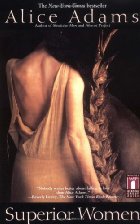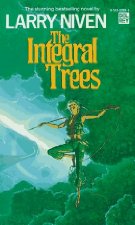Archive
Book Review: Superior Women by Alice Adams (Bottom of TBR Pile Challenge)
 Summary:
Summary:
When Californian Megan Greene runs has a steamy affair in the summer of 1943 with a Harvard student visiting the west coast for the summer, she decides to follow him back to the east coast and attend Radcliffe. There she meets four other women, three of whom it might be more accurate to call frenemies than friends. Their lives and destinies repeatedly intertwine throughout the tumultuous changes of mid-20th century America.
Review:
I kept my eye out for this book when it was named as a read-a-like to my 2011 5 star read The Group (review) by Mary McCarthy. So when I saw it on a Better World Books sale list, I ordered a copy. I can see why this was named as a read-a-like. Both books view a historical time period through a group of women who attended a women’s college together. What McCarthy wrote stunningly and with subtlety, though, Adams wrote in a barely above-average fashion.
The book covers 1940s to 1980s America, yet as the decades move on, less and less is said. The 1940s are expressed clearly with exquisite detail, and I was excited to see what would happen with the 1950s and the 1960s. But the 1950s slowed down, the 1960s were barely touched upon, the 1970s were jumped over almost entirely, and the 1980s were the final chapter of the book. The pacing was all off. I wanted to know these women in as much detail in the latter decades as in the first. Instead of feeling like I knew them more and more intimately, they increasingly became strangers to me.
One thing that I think really works against the book is it is neither an ensemble nor a one character piece. Most of the book is told about Megan, but not all of it. We get snippets of the other characters, meaning perspectives that Megan is not privy to, but not enough to ever truly know them. Since most of the book is about Megan, these bits away from her feel sort of like the story is robbing us of more time with the main character we are interested in. Similarly, reading the blurb and the title, I thought this was going to be an ensemble book, which is not what we get either. I wanted to know much more about two of the characters in particular, Peg, who comes out as a lesbian at some point in the 1960s, and Cathy, who has an affair with a priest. These two stories are wonderfully intriguing, particularly Peg’s since her love of her life is met on a mission to register black voters in the American south, and her love interest is a Latina woman. There is so much meat to that storyline, and yet it is barely touched upon while we instead listen to Megan hem and haw about her job, and Lavinia try to figure out how best to cheat on her husband. The balance of telling this ensemble piece was just entirely off.
Similarly, while big issues and events of mid-20th century America were briefly touched upon, the book never really presented a truly personal look at any of them. For instance, Megan has a friend who is bashed in a drive-by gay bashing but we never get to see Megan emotionally deal with this stark reality. She hears about it, calls him, and moves on. Similarly, as previously mentioned, Peg comes out as a lesbian, and we see a snippet of her depression caused by living the lie of being straight, but we never get to understand the emotions or impetus behind her bravely coming out and living in a visible, inter-racial lesbian relationship in the south. It is disappointing because we get a taste of really encountering these historical issues, but we never actually get to.
In spite of all these problems, I still enjoyed reading the book well enough. The plot, while frustrating, does progress forward in an interesting fashion. The characters, although frequently two-dimensional, are bright and vivid. I came away with the perspective I always have with historical fiction about women’s history. That I am grateful I was born in a different time, because we women have much more opportunities available to us now. So I appreciated my visit to that time period but it was a bit disappointing.
Overall, if you are a huge fan of historical fiction about women’s issues, this is an interesting book to add to your repertoire. It is a good comparison to others that did it differently or better, and it is still fun to visit those time periods. If this type of literature is not generally your cup of tea, though, I would suggest you instead read stronger competitors in that genre, such as The Group.
3.5 out of 5 stars
Book Review: The Integral Trees by Larry Niven (Series, #1)
 Summary:
Summary:
Humans settled on a planet far from Earth after mutinying from their spaceship. Generations later, their descendants have formed various tribes and cities ranging in civilization from tribal to bronze age level of technology. What makes the planet unique is its lack of gravity. Most people live in “integral trees” or in “jungle clouds” with varying amounts of pull (gravity) due to the presence of the tree. In this peek at their existence, we follow a bunch of intrepid people who survive when their tree dies only to find themselves marooned in the sky, along with the flying animals, pools of water, flying fish, and more.
Review:
This book is the definition of classic hard scifi. The world is complex, alien, and unique. It manages to simultaneously be barbaric and technologically advanced in some ways. Everything is as alien from our own lives as we could possibly imagine, from what the people eat to how their cultures are to how people interact.
It takes a bit to get into the book. At first the concept of the planet and how people live on it is overwhelming. But Niven introduces things slowly, so by the time you’re reading about a jungle cloud with people with prehensile toes, it’s easy to imagine and doesn’t slow you down at all in the story. Yet simultaneously it is obvious from looking back to the beginning of the book that Niven always has a clear understanding of how his world works, even if it’s not entirely clear to the reader yet. This is the definition of good writing, and especially good scifi.
The characters have a tendency to be a bit one-dimensional and flat. This is possibly due to all of the attention being paid to the world the story is set in. However, the story still would be improved with more three-dimensional characters. One character in particular goes from a female warrior to a married woman to a concubine and seems to take it all a bit too much in stride for someone who started out as a woman warrior. It felt a bit as if Niven was changing the characters to fit the situation rather than seeing how the characters he had already developed actually would react.
There is definitely a bit of a tinge of male fantasy to the whole story. Even the jungle cloud women who participate equally in their society end up being sister wives to one guy. Personally, I thought given the way women were treated in the story that it must have come out in the 1950s or 1960s, but a quick check shows it came out in 1984. That’s a bit….disturbing. While it’s certainly logical that some cultural things will not be ideal on a foreign planet such as this, the status of women in the novel reads less as a commentary and more as something the author would very much like the world to look like.
Overall, this is an enjoyable hard scifi novel with a rich setting, weak characters, and questionable mores. I recommend it to lovers of hard scifi, but most others probably would not enjoy it.
3 out of 5 stars
Source: PaperBackSwap


